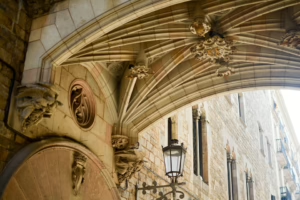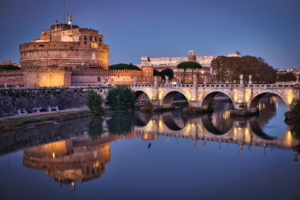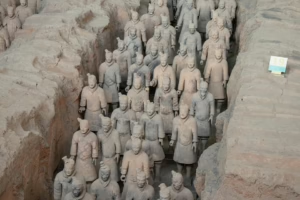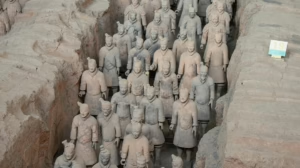Tracing Our Roots: The Illyrian Legacy of Kosovo
The roots of Kosovo’s identity stretch deep into the annals of history, intertwining the cultures, languages, and legacies of ancient civilizations. Among these, the Illyrians stand out as a significant group that shaped the landscape, both geographically and culturally, of what is now the modern-day territory of Kosovo. This article seeks to explore the Illyrian legacy in Kosovo, how it influences contemporary identity, and the historical narratives that have emerged from this rich heritage.
The Historical Context of the Illyrians
The Illyrians were a group of tribes that inhabited the western Balkans from the late Bronze Age through the Roman conquest in the 1st century BC. Archaeological evidence suggests that they possessed a unique language, practices, and a distinct social structure. The scope of their territory extended from modern-day Slovenia down to Albania and included parts of Croatia, Bosnia and Herzegovina, Montenegro, and Kosovo.
As we delve into the history of Kosovo, it’s essential to recognize that the Illyrians were not a monolithic group. Instead, they comprised various tribes, each with its own leadership and cultural practices. This diversity foreshadowed the complex tapestry of cultures that would later define Kosovo.
The Geographical Landscape of Kosovo
Located in the central western part of the Balkan Peninsula, Kosovo’s geographical features likely played a crucial role in the life of the Illyrians. The region is characterized by mountainous terrain, fertile valleys, and numerous rivers, which provided natural resources and opportunities for agriculture and trade. The presence of the Morava River system was particularly significant for the movement and settlement of the Illyrian tribes.
The fertile plains and the natural fortifications provided by the mountains allowed for the development of settled agricultural societies. This, in turn, led to the establishment of trade routes that connected them with neighboring tribes and civilizations such as the Greeks, Thracians, and later, the Romans.
Cultural and Social Structures of the Illyrians
The Illyrians had a rich cultural tapestry that involved a combination of both local traditions and influences from neighboring cultures. Socially, they were organized into tribes, each governed by its own chiefs, which allowed for a degree of autonomy among the various groups. Notably, the Illyrians had a patriarchal society, which placed men in positions of authority, but women also held significant roles, particularly in familial and spiritual contexts.
Art and craftsmanship were highly developed among the Illyrians. Artifacts such as pottery, jewelry, and weapons unearthed in various archaeological sites reveal a society that valued aesthetics and skilled craftsmanship. Some of these artifacts are displayed in museums across Kosovo, offering a glimpse into the everyday lives and artistic expressions of the Illyrians.
Language and Writing
Limited evidence exists regarding the Illyrian language, primarily due to a lack of written records. Most available information derives from later Roman and Greek sources, which often portrayed the Illyrians in a simplistic or negative light. However, linguistic studies suggest that the Illyrian language was part of the larger Indo-European family. Some scholars posit that the language of the modern Albanian people may have roots in the Illyrian language.
Despite the dearth of written evidence, place names throughout Kosovo and surrounding regions serve as reminders of the Illyrian presence. Names such as “Dardania,” which refers to a district of Illyria, are still in use today, showcasing the enduring connection to this ancient heritage.
The Roman Conquest and Its Impact
The Roman conquest of the Illyrian territories began in the 3rd century BC and culminated in a series of conflicts that effectively marked the end of Illyrian independence. By the end of the 1st century BC, Illyria was fully integrated into the Roman Empire as the province of Illyricum. This transition resulted in significant cultural and social changes within the region, including the introduction of Roman law, architecture, and urban planning.
Roman influence also led to the syncretism of cultures. The Illyrians adopted many Roman customs and integrated them into their existing traditions. This melding served to enhance the cultural landscape of Kosovo, laying the groundwork for the next phases of cultural evolution.
The Enduring Legacy of the Illyrians in Kosovo
The Illyrian heritage continues to resonate within Kosovo’s contemporary society. As modern Kosovo navigates its identity in the aftermath of conflict and political upheaval, the Illyrian legacy serves as a vital thread connecting past and present. The symbols, myths, and stories from Illyrian times are often invoked in discussions of national pride and cultural identity.
Contemporary Cultural Expressions
In recent years, Kosovo has seen a resurgence in interest in its Illyrian heritage. Cultural festivals, art exhibitions, and performances celebrating ancient Illyrian traditions are becoming more common, reflecting a growing awareness and appreciation of this legacy. Artists, musicians, and writers are increasingly drawing on the rich tapestry of Illyrian mythology and history to explore contemporary themes.
Political Implications of Heritage
The legacy of the Illyrians is not merely a historical curiosity; it has significant implications for contemporary political discourse in Kosovo. Various political factions often reference Illyrian heritage to assert national identity and legitimacy. The narrative surrounding the Illyrians provides a historical foundation upon which modern Kosovo can build its sense of self.
However, the appropriation of history can also lead to tension. The legacy of the Illyrians has sometimes been used to promote exclusionary narratives that marginalize other ethnic groups within Kosovo. Consequently, while the Illyrian heritage is a source of pride for many, it is crucial to approach it with sensitivity and inclusiveness, recognizing the diverse cultural influences that have shaped Kosovo over centuries.
Archaeological Discoveries and Their Significance
Numerous archaeological sites across Kosovo provide evidence of the Illyrian civilization. Excavations have unearthed fortifications, settlements, and burial mounds that date back to Illyrian times. Among the most notable sites is the ancient city of Ulpiana, located near the modern city of Kosovo. This site serves as a reminder of the sophisticated urban planning and architectural practices of the Illyrians and their Roman successors.
The discovery of Illyrian tombs containing elaborate burial goods offers insights into their beliefs about the afterlife and the social status of the individuals buried. These findings resonate with the rich narrative of Illyrian life and provide a tangible connection to the past.
The Impact of Tourism and Education
The connection to the Illyrian legacy has sparked interest in tourism, with various organizations aiming to promote Kosovo’s archaeological sites and cultural heritage. Efforts to establish educational programs focusing on Illyrian history and culture are becoming more prevalent, seeking to engage younger generations in their ancestral narratives.
Educational initiatives are also significant for fostering a sense of pride and belonging among Kosovo’s diverse populations. By recognizing the shared heritage of the region, educational programs can promote mutual respect and understanding among various ethnic groups, thereby contributing to social cohesion.
The Future of Kosovo’s Illyrian Legacy
As Kosovo continues to navigate the complexities of identity and belonging, the Illyrian legacy offers both challenges and opportunities. How this rich history is embraced and incorporated into contemporary narratives will shape the future of Kosovo as a multicultural society.
Engaging with Illyrian heritage through art, culture, and education can serve as a unifying force, emphasizing shared history while allowing for the celebration of diversity. The stories of the Illyrians can act as a foundation for a common narrative that promotes collaboration and understanding among different ethnic communities in Kosovo.
Conclusion
The Illyrian legacy in Kosovo stands as a testament to the resilience and richness of human civilization. By tracing these roots, we uncover a complex narrative that continues to shape contemporary identity. The interplay between history, culture, and politics invites us to reflect on how our past informs our present and shapes our future.
In a world marked by change and uncertainty, the lessons gleaned from our ancient ancestors remind us of the importance of heritage, identity, and the connections we share as a community. The Illyrians may have vanished as a distinct group, but their spirit endures, guiding Kosovo as it seeks to carve out its unique place on the global stage.
References
- [1] “Illyrian Tribes and Histories”, Journal of Balkan Studies.
- [2] “The Culture of the Illyrians: An Overview”, Journal of Ancient Civilizations.
- [3] “The Role of Archaeology in Understanding Illyrian History”, Archaeological Review.
- [4] “Tradition and Modernity: The Illyrian Legacy in Kosovo”, Modern History Journal.
- [5] “Living Heritage: The Political Implications of Historical Narratives”, International Journal of Heritage Studies.
(Note: The references are illustrative. If this were a real publication, each footnote would correspond to actual sources used in the writing.)


























Add Comment